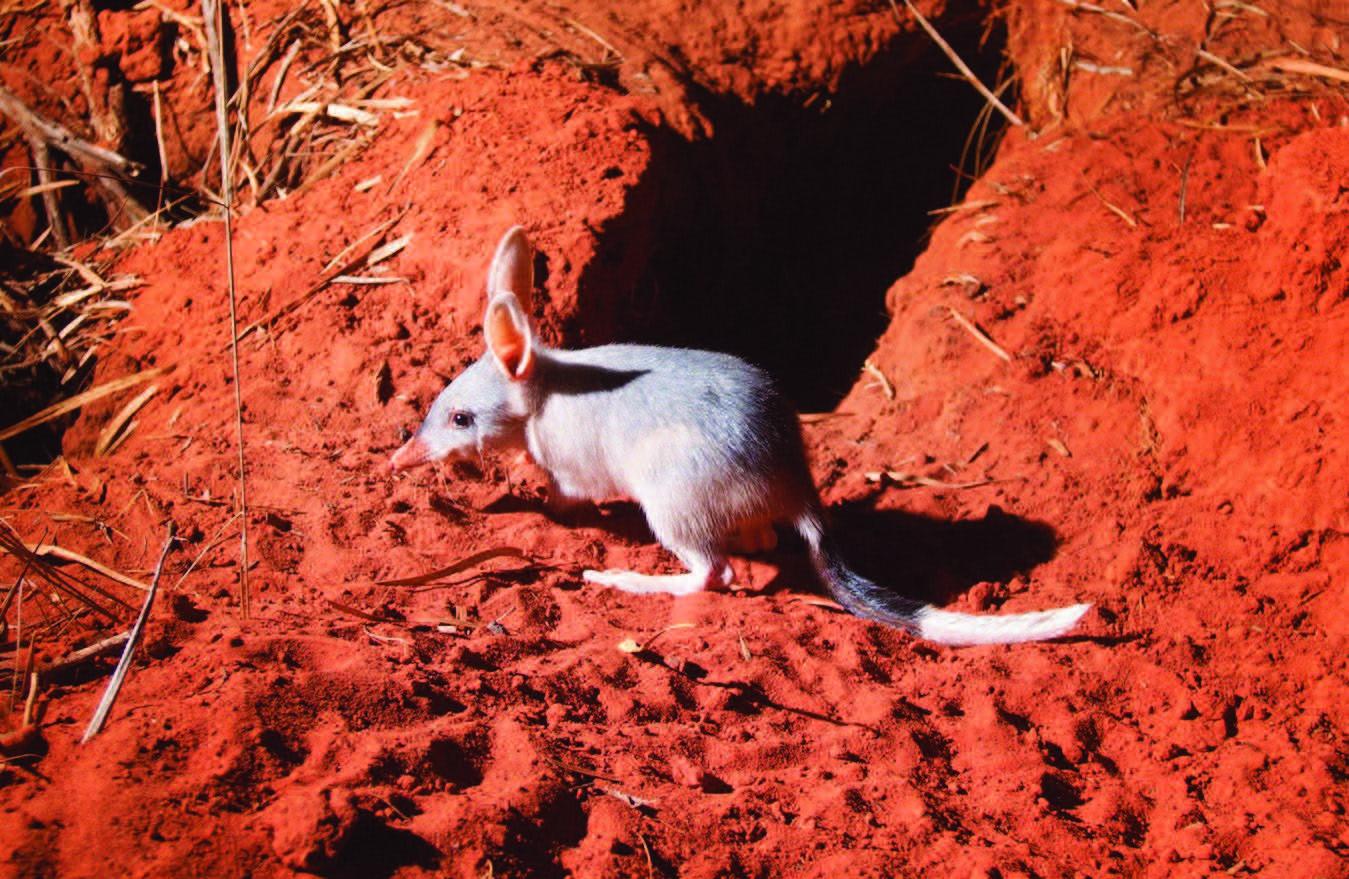
2020 - THE BILBY
The Bilby — or, as it is called in the Kimberley, Nyalku, Ngarlgumirdi, Jitarru or Mirtulurju
Bilbies are a well-known, peculiar and charismatic-looking Australian marsupial. In the Kimberley we are lucky to still have them around, even right on the outskirts of Broome. But don’t let this fool you; they are a threatened species. The Kimberley, Great Sandy Desert and Tanami Desert are the last healthy refuges in the wild.
So, what do we know about the bilby, Macrotis lagotis, or, as it is most commonly called in the Kimberley, Nyalku (Walmajarri)?
They used to range across the arid 70% of Australia and the wet forests of southern WA, but predation by cats and foxes, competition from rabbits, and habitat loss through fire and land clearing has shrunk their range by 80%. They are now confined to the north-west.
- They are the largest member of the family of marsupials called bandicoots.
- An adult male can weigh up to 2.5kg, with body length of 55cm and a tail of 29cm. Females are about half the size of males.
- Their vision is poor. They rely on their strong senses of hearing and smell, hence their long ears and noses.
- They are brilliant burrowers and dig spiralling burrows up to three metres deep. A bilby may have up to a dozen burrows in an area, and other animals such as goannas, snakes, pardelotes and mulgara, often occupy them. Bilbies are the home-builders of the desert!
- The females have a pouch that opens backwards so that it doesn’t fill with dirt while they are digging. They have litters of up to three, have one of the shortest gestation periods of any mammal at 14 days, and breed whenever the conditions are right.
- They are opportunistic omnivores, eating a wide variety of food including termites, grass seeds, grubs, fruit, insects, fungi and bush onions. Some of these food types grow shortly after fire, others a long time afterwards. Therefore, the best habitat for bilbies includes a mosaic of vegetation of different ages, providing a buffet of food types.
- When they forage, they create lots of small holes and divots. These diggings fill with leaf litter and seeds, creating the perfect potting mix and leading to a significant increase in seed germination. Bilbies are the gardeners of the desert!
- Bilbies are valued by Aboriginal people: as meat, and culturally, in ceremonies and the dreaming stories that feature them.
Around 80% of the bilby’s current range is on Aboriginalmanaged land, so Aboriginal rangers and their communities are the most important conservation force that will help save the bilby. Luckily in the Kimberley there is a hard working network of Aboriginal rangers looking after country, for nyarlku and all the other species.
So, a big thanks to the Paruku, Kija, Gooniyandi, Bunuba, Ngurrara, Nyikina Mangala, Yawuru, Nyul Nyul, Karajarri and Nyangumarta Rangers for their great work protecting bilby country!
Uniquely Broome edition 2020
